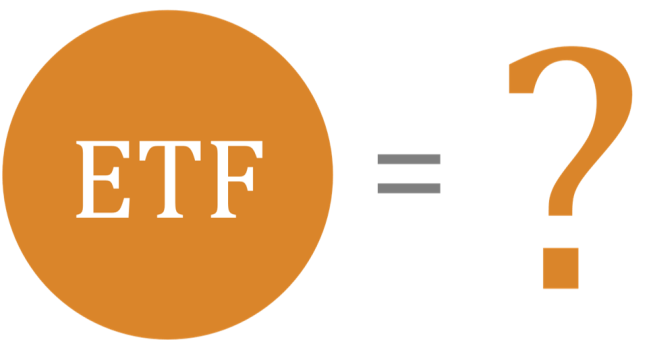Back to Basics: Gold ETFs 101
By Luke Chua, BullionStar
What are the key differences between buying ETF Gold and physical Gold?
A Gold Exchange-Traded Fund (ETF) attempts to track and ‘mirror’ the price performance of gold bullion by holding gold bars or derivatives and issuing shares backed by their holdings of physical metal or derivatives. A Gold ETF, like GLD, has their shares sold in baskets of 100,000 and is marketed by State Street. As compared to physical Gold, a key difference is in ownership and redemption.
Ownership and Redemption
Even though an ETF like GLD might be “physically backed,” ordinary investors cannot simply go to the ETF marketer or the vaults in which the bullion is claimed to be stored at and redeem their bullion. Only “authorized participants” are allowed to deposit or withdraw gold and create or redeem shares. Authorized participants are registered broker-dealers or other securities market participants which have entered into agreements with the trustee and sponsor (think Goldman Sachs, Morgan Stanley, JP Morgan, Citigroup, etc.), allowing them to deposit either gold or shares in exchange for the other through unallocated accounts until the operation is completed. Ordinary investors can only buy or sell shares in the open market, after Authorized Participants decide to place or sell them.
In short, ordinary investors and regular shareholders of ETFs have no rights of redemption and the gold is not required to be insured by the Trust, which is not liable for loss, damage, theft, nor fraud. Therefore, an ordinary investor/shareholder does not actually “own” gold, but rather, owns an asset that is backed by gold which tries to mirror the price performance of gold.
If the ETF is an open ended mutual fund, like GLD, its holdings mainly change due to arbitrage: whenever the trust’s shares trade at a discount to the Gold price, “authorized participants" will sell Gold short and buy the trust’s shares. Thereafter they will obtain the Gold by redeeming the shares. Conversely, if the shares trade at a premium, they will buy the Gold and sell short the shares concurrently. Then they will create new ‘baskets’ of shares by delivering the Gold they have bought to the trust.
Hence, as an ordinary investor, at no time do you actually own a gold coin or bullion bar and the risks entailed in owning ETF Gold are much the same as those of other financial instruments – counterparty risk. In addition, there is the risk of pricing failure, as well as a risk that some of the gold bars owned by the fund are encumbered in some way – you never get to see them anyway.
Fees
There are management fees for the ownership of ETFs. These fees will continually cause the ETF price to negatively diverge from the bullion price over time also known as the expense ratio. Management fees or expense ratios can range from 0.4 % to 0.95 % each year.
Paper or Digital Wealth vs. Physical and Real Wealth
In summary, as an ordinary investor, when you buy ETF Gold, you do not own a title to the Gold itself, but rather, you are placing your funds in the hands of the banks that serve as “authorised participants" of the ETF. Essentially, you own nothing more than a stock symbol in your portfolio and this does not protect you from the systematic risks inherent in the financial system.
Popular Blog Posts by BullionStar
 How Much Gold is in the FIFA World Cup Trophy?
How Much Gold is in the FIFA World Cup Trophy?
 Essentials of China's Gold Market
Essentials of China's Gold Market
 Singapore Rated the World’s Safest & Most Secure Nation
Singapore Rated the World’s Safest & Most Secure Nation
 Infographic: Gold Exchange-Traded Fund (ETF) Mechanics
Infographic: Gold Exchange-Traded Fund (ETF) Mechanics
 BullionStar Financials FY 2020 – Year in Review
BullionStar Financials FY 2020 – Year in Review
 Is It Too Late to Buy Gold in 2025? 7 Signs Pointing to Gold’s Next Major Rally
Is It Too Late to Buy Gold in 2025? 7 Signs Pointing to Gold’s Next Major Rally
 Silver’s Coming Breakout: Expert Insights from Peter Krauth
Silver’s Coming Breakout: Expert Insights from Peter Krauth
 The Golden Truth: How Financial Advisors’ Silence on Bullion Could Cost You Your Wealth
The Golden Truth: How Financial Advisors’ Silence on Bullion Could Cost You Your Wealth
 US Announces New Tariffs: What It Means for Your Wealth and Why Gold Still Wins
US Announces New Tariffs: What It Means for Your Wealth and Why Gold Still Wins
 The U.S. Dollar’s Decline: Why Precious Metals Matter More Than Ever
The U.S. Dollar’s Decline: Why Precious Metals Matter More Than Ever






 BullionStar
BullionStar 0 Comments
0 Comments











